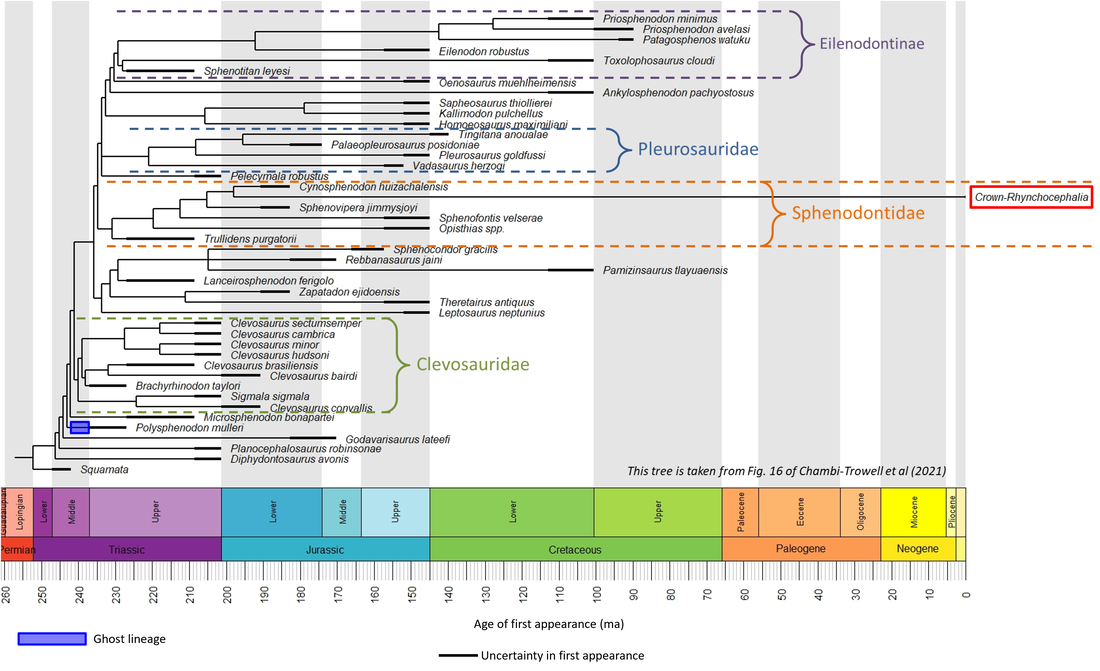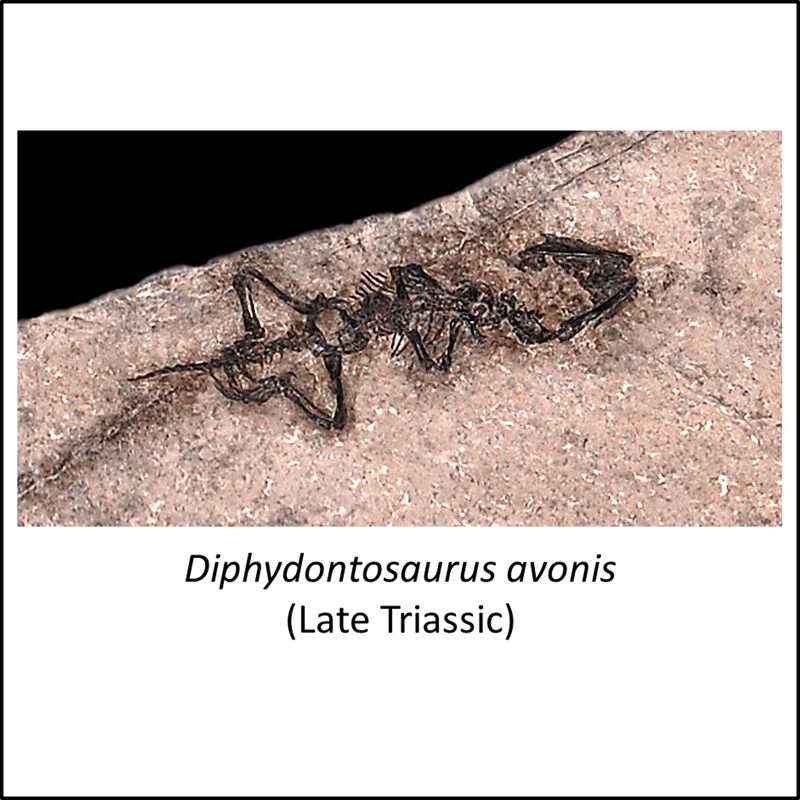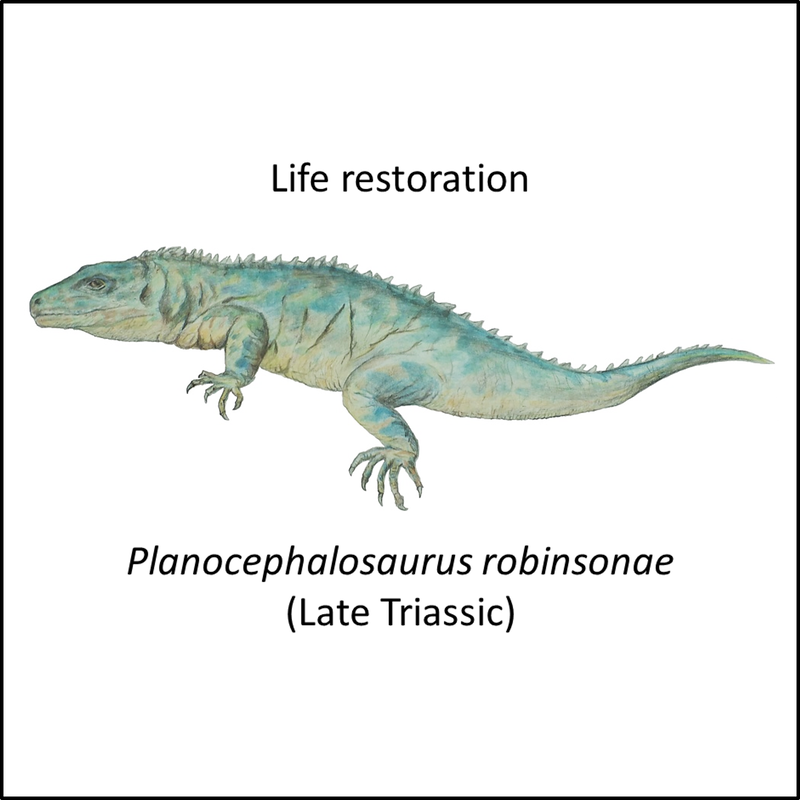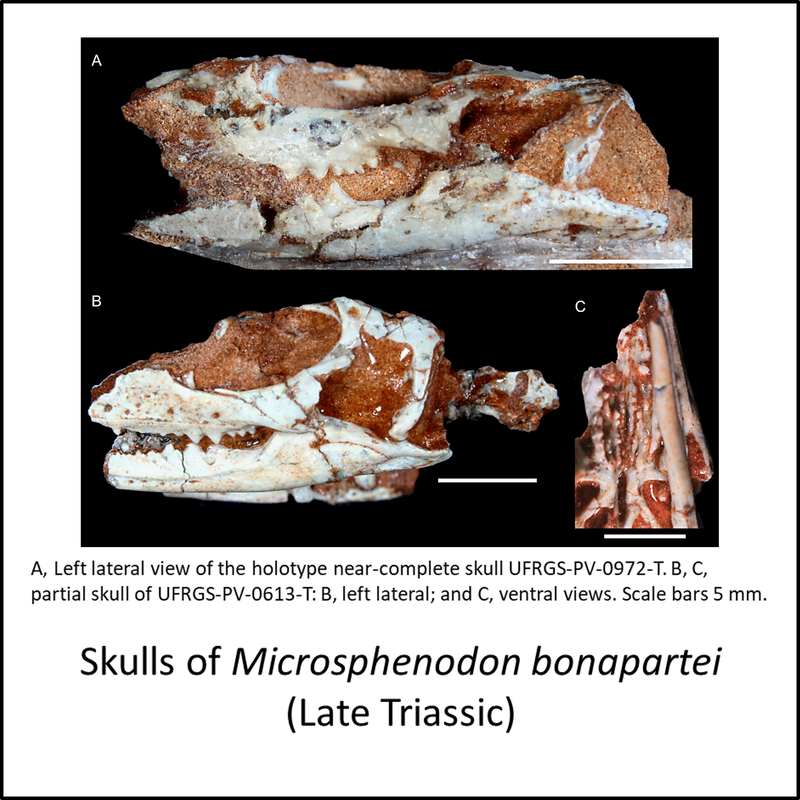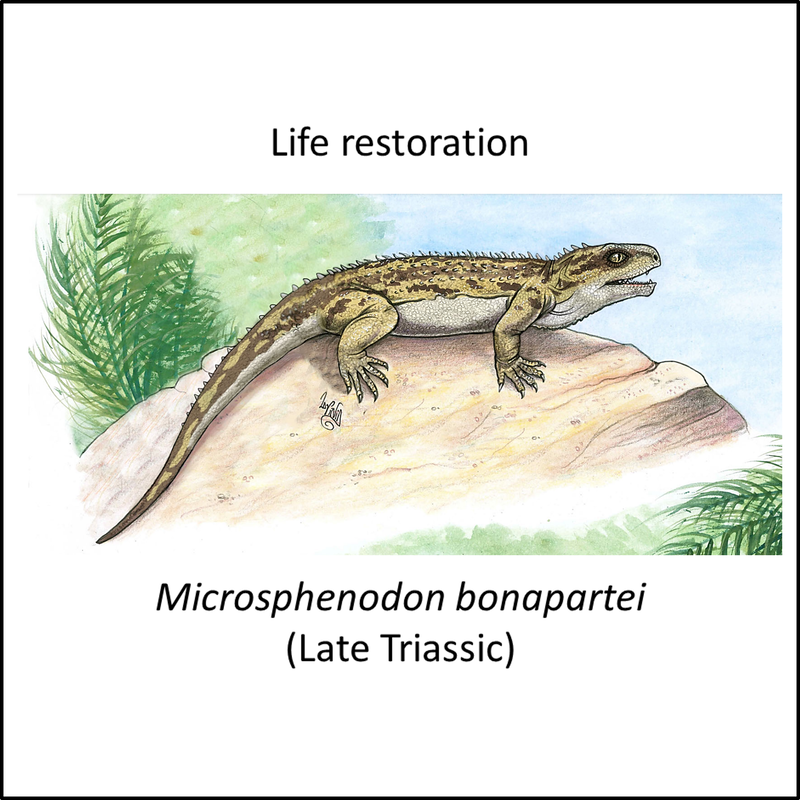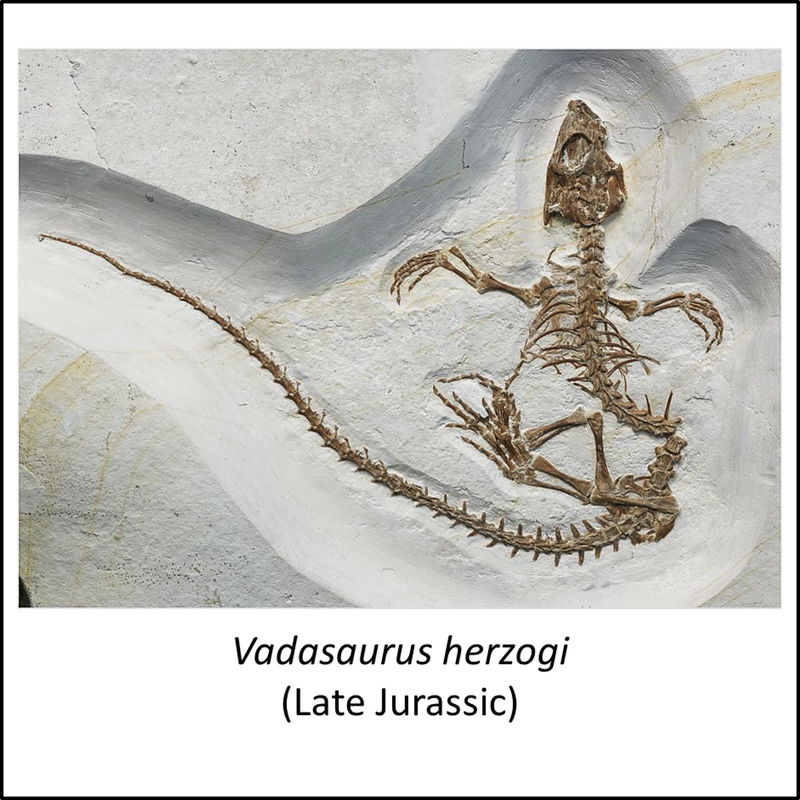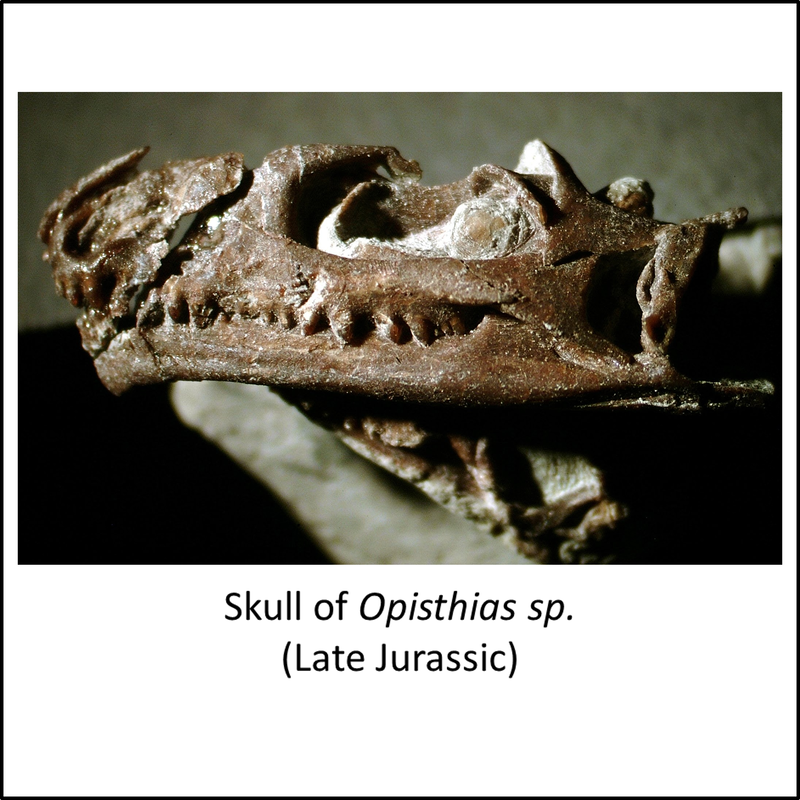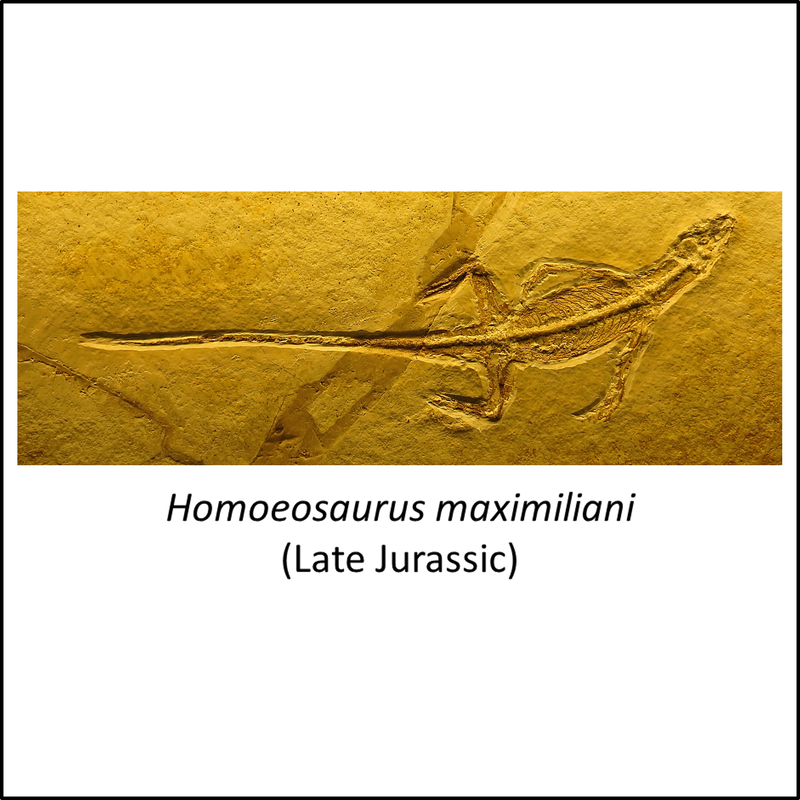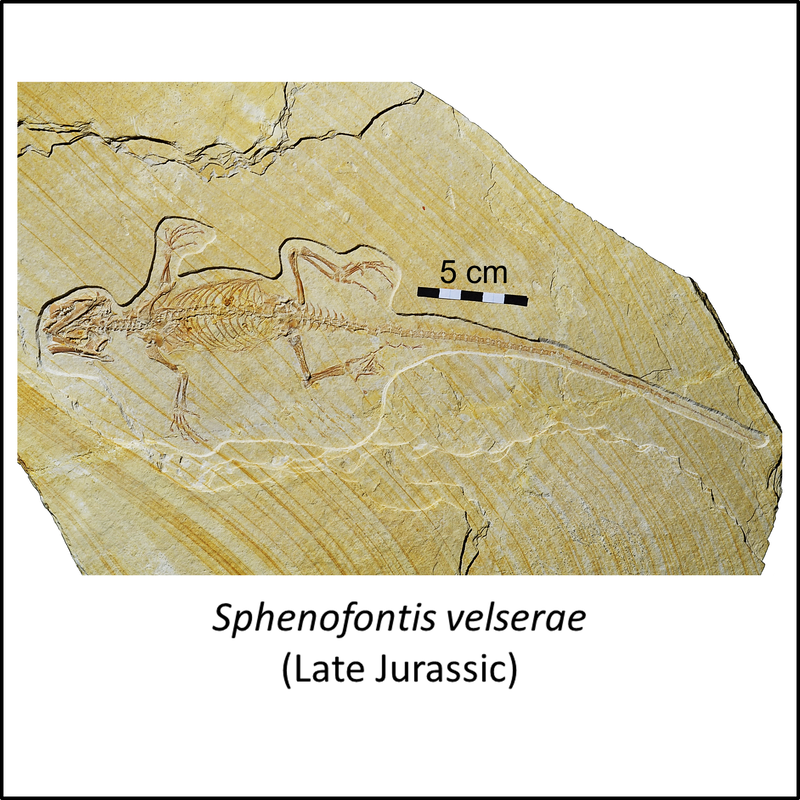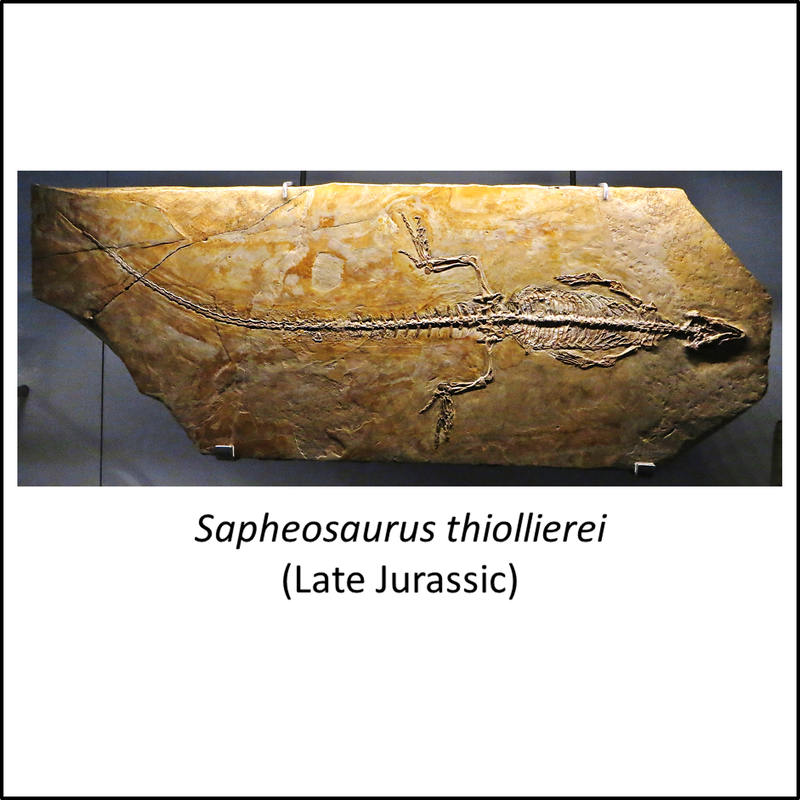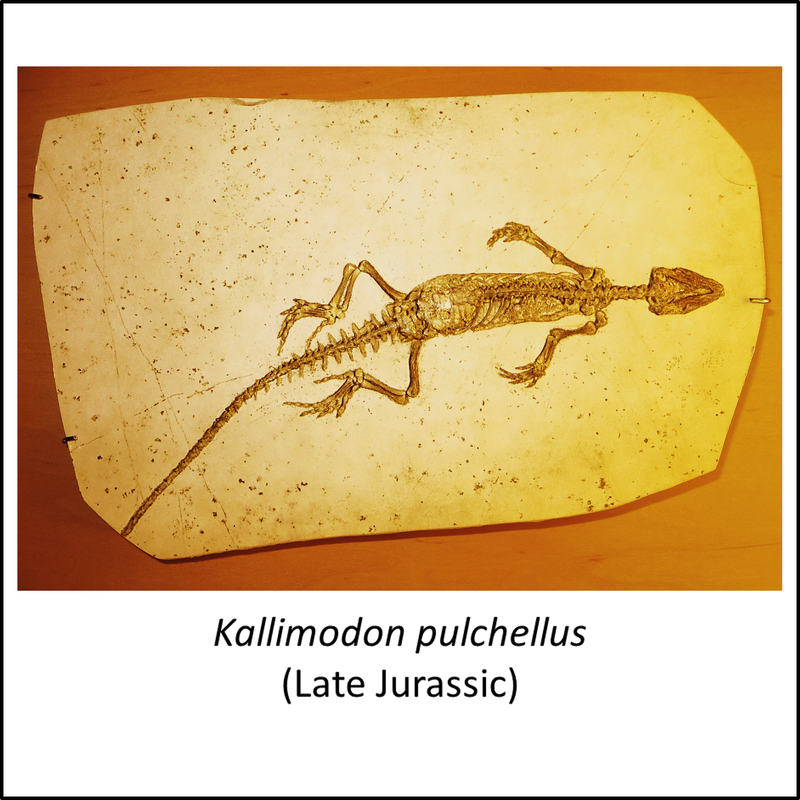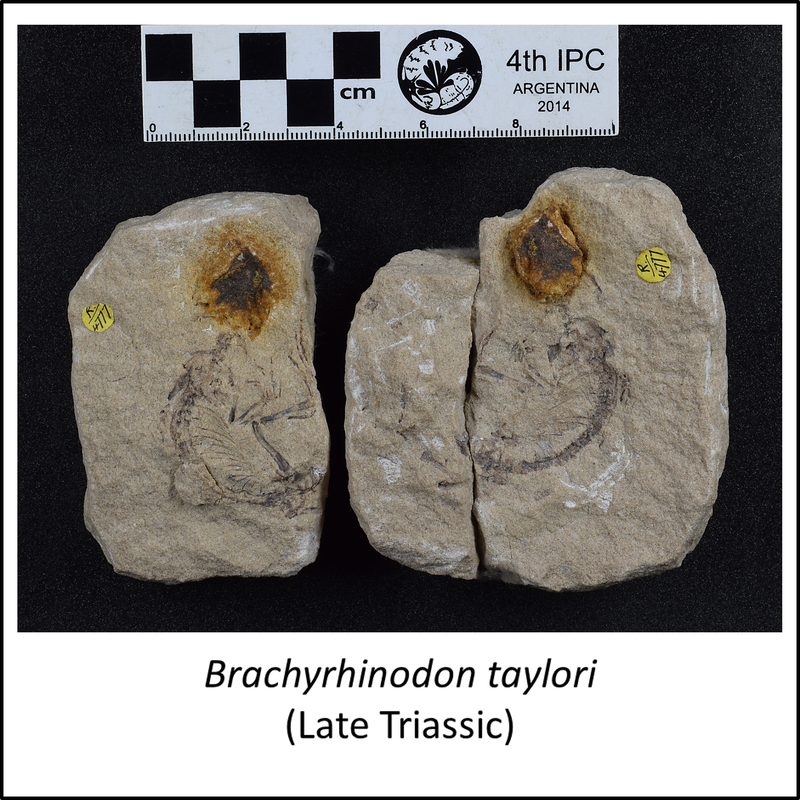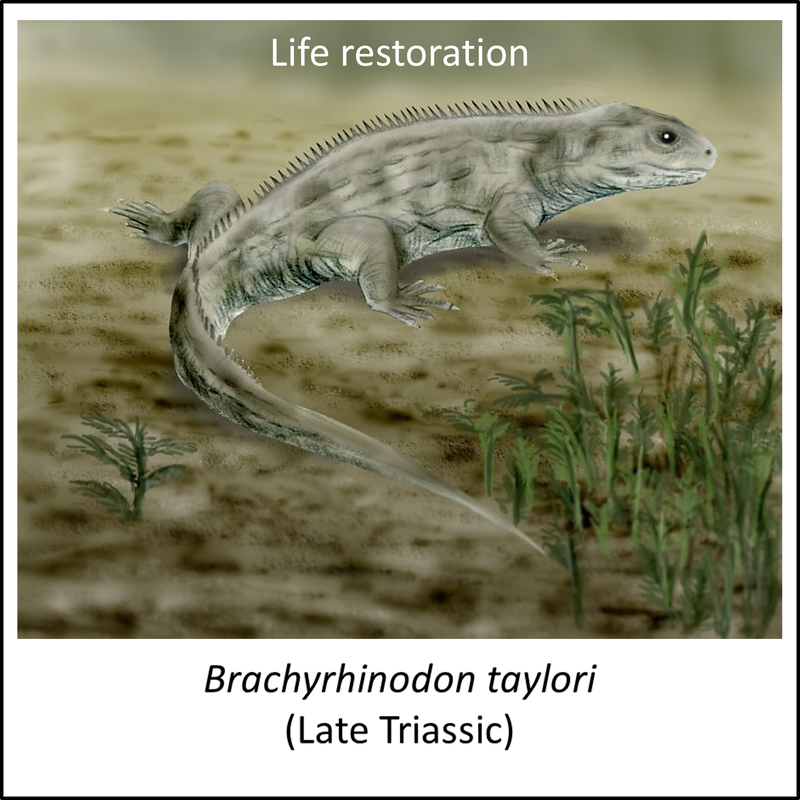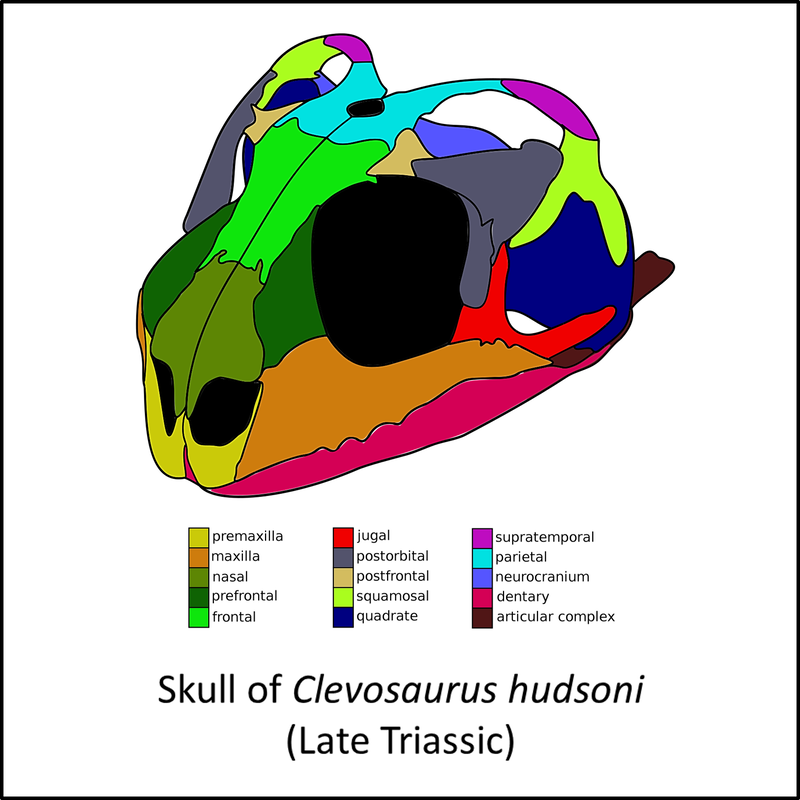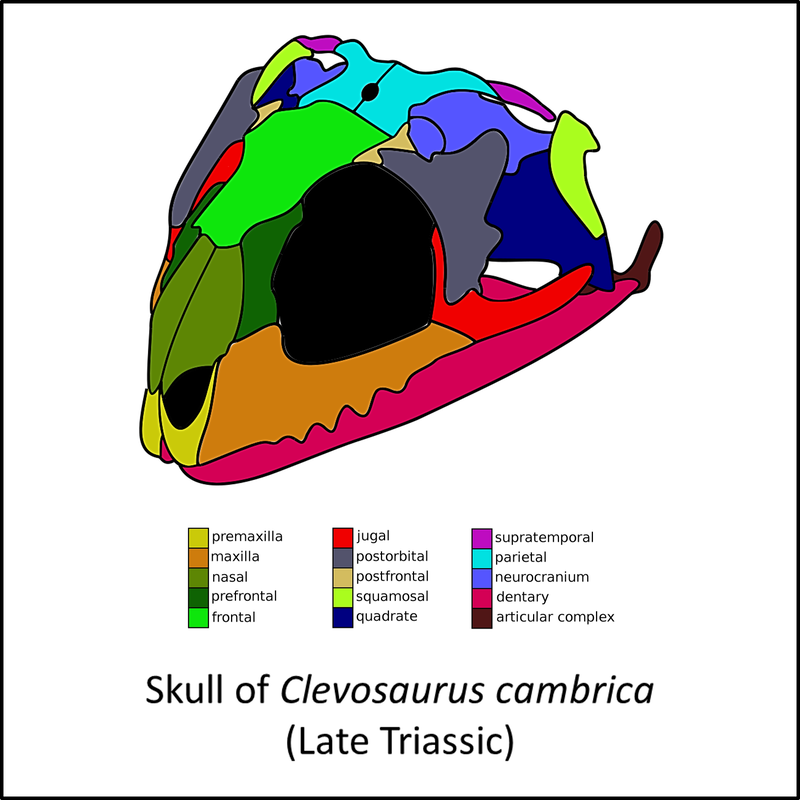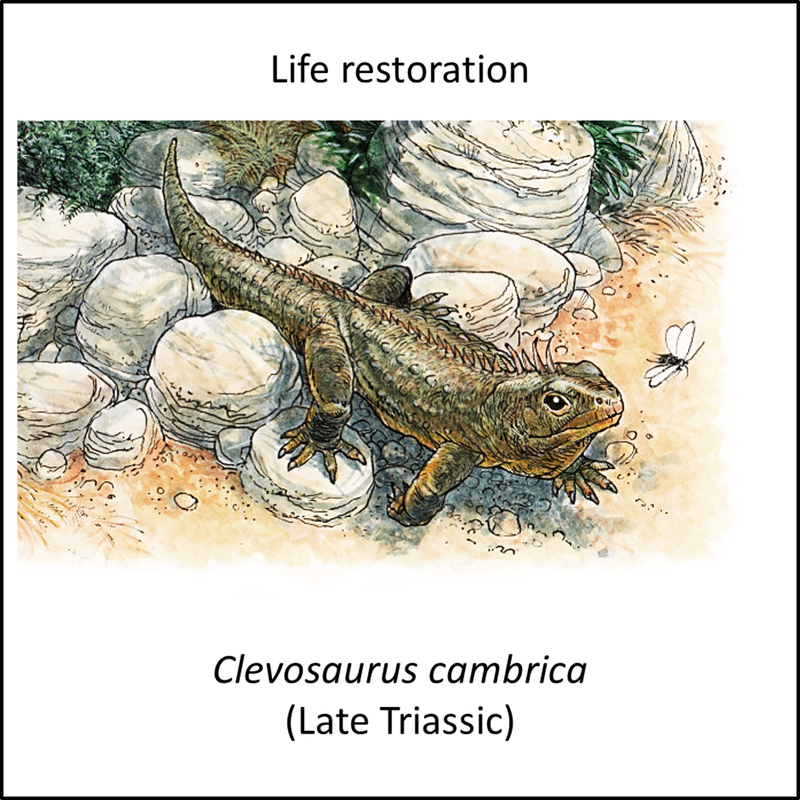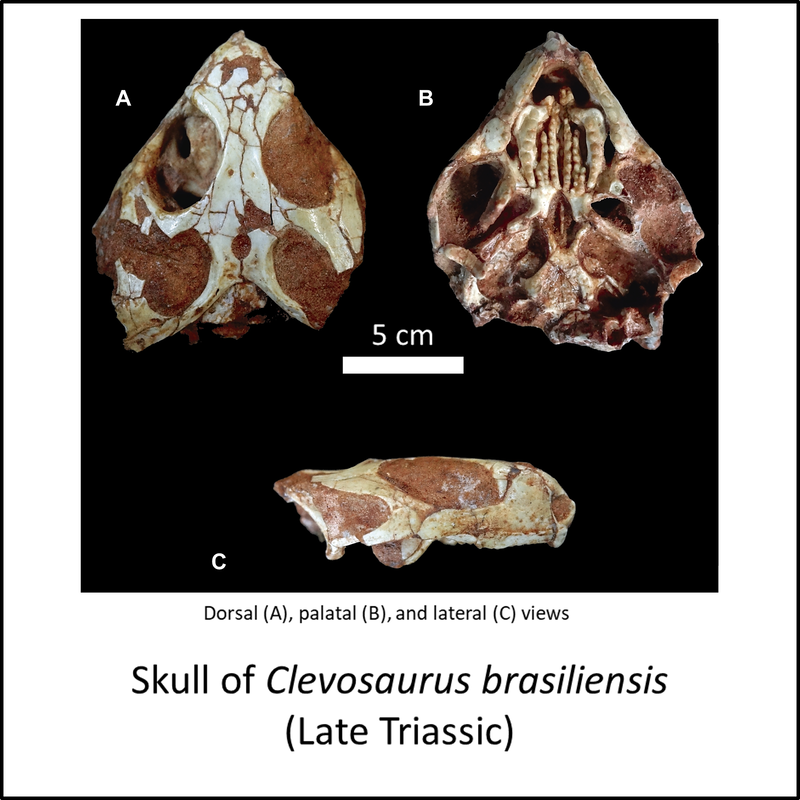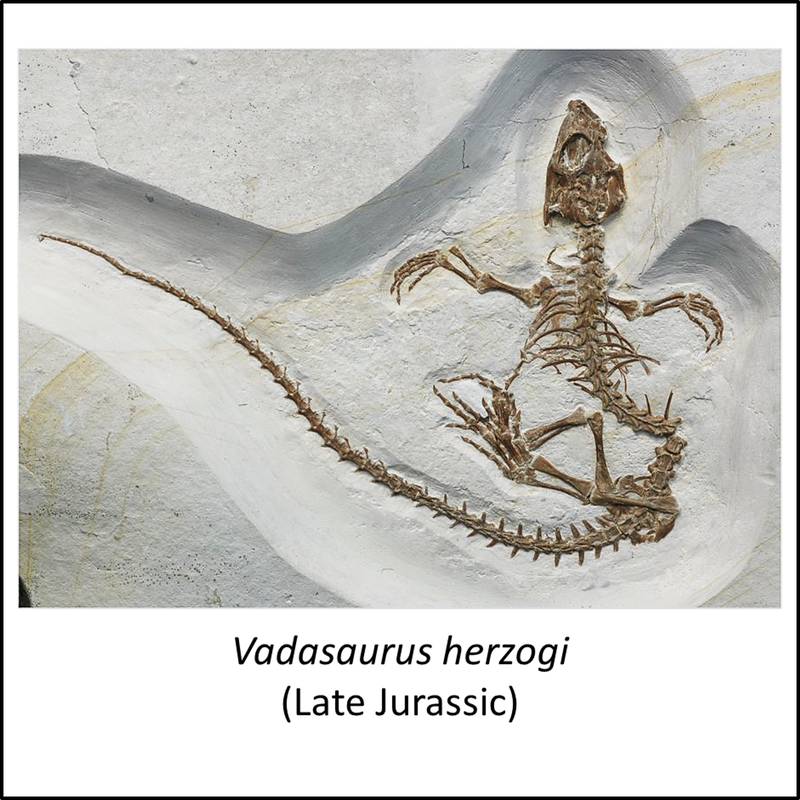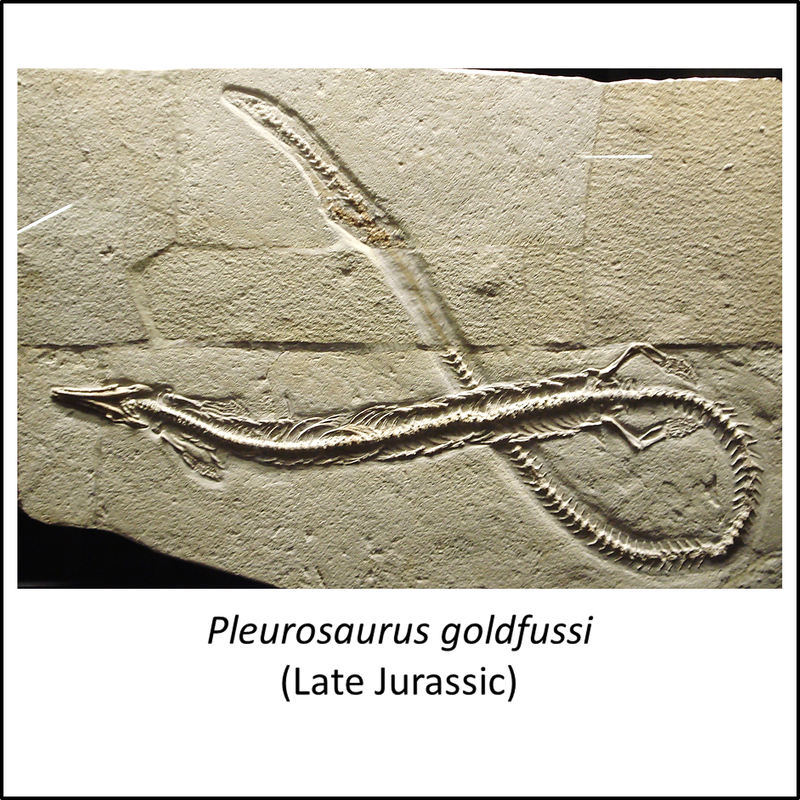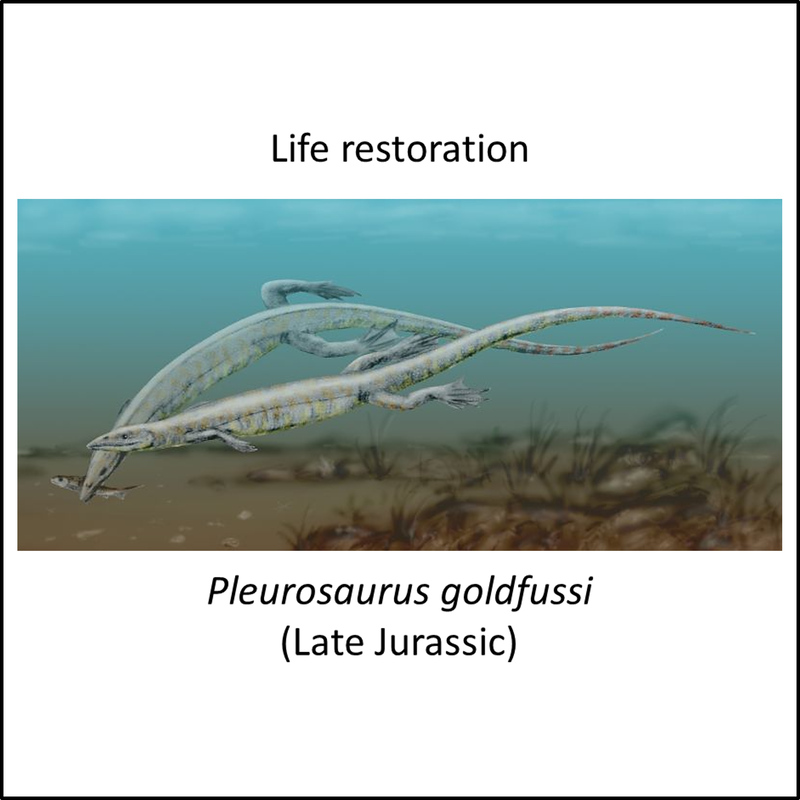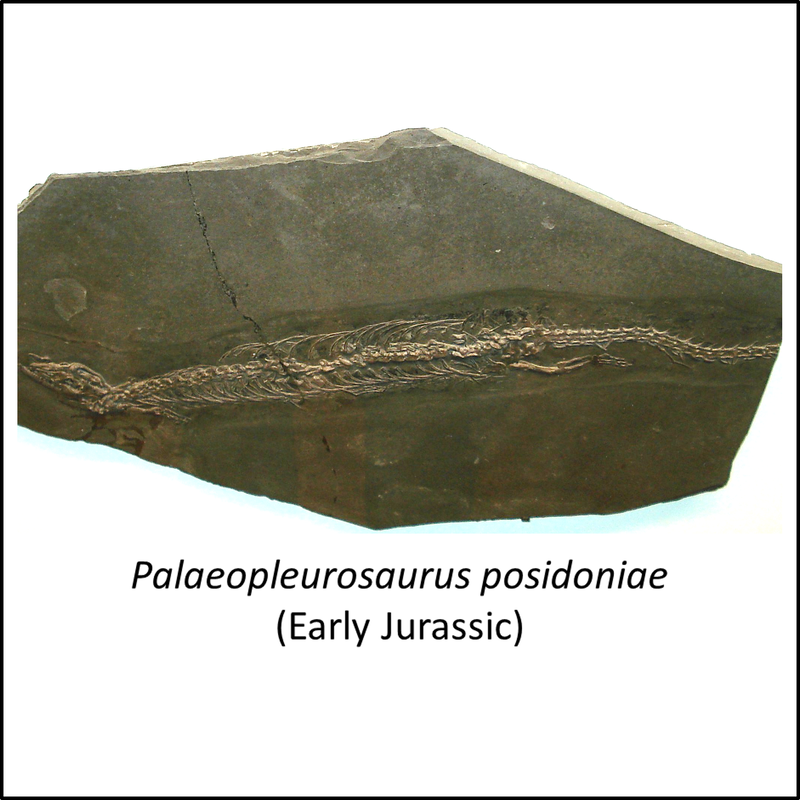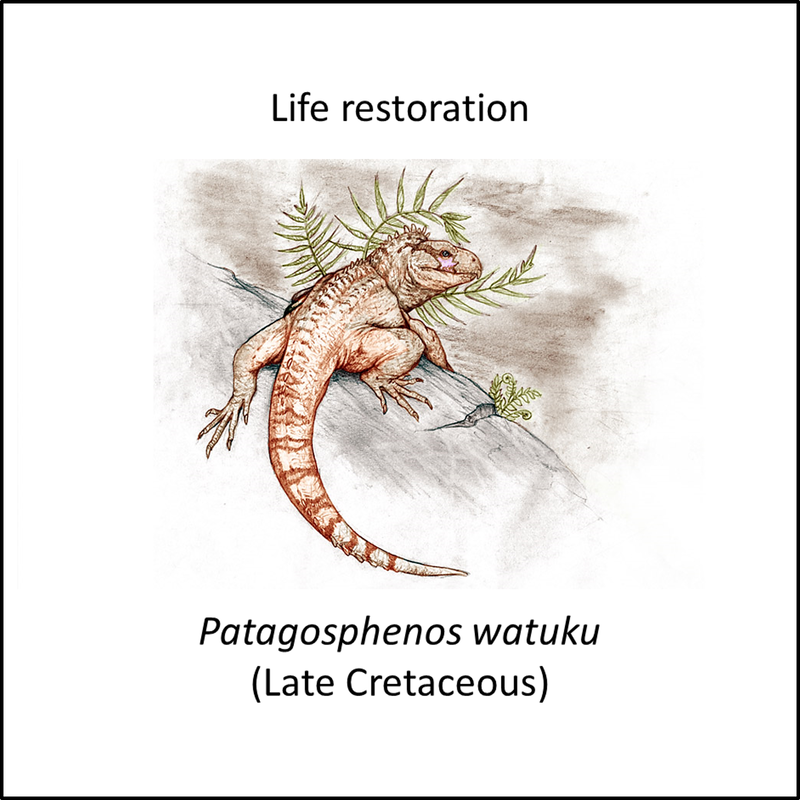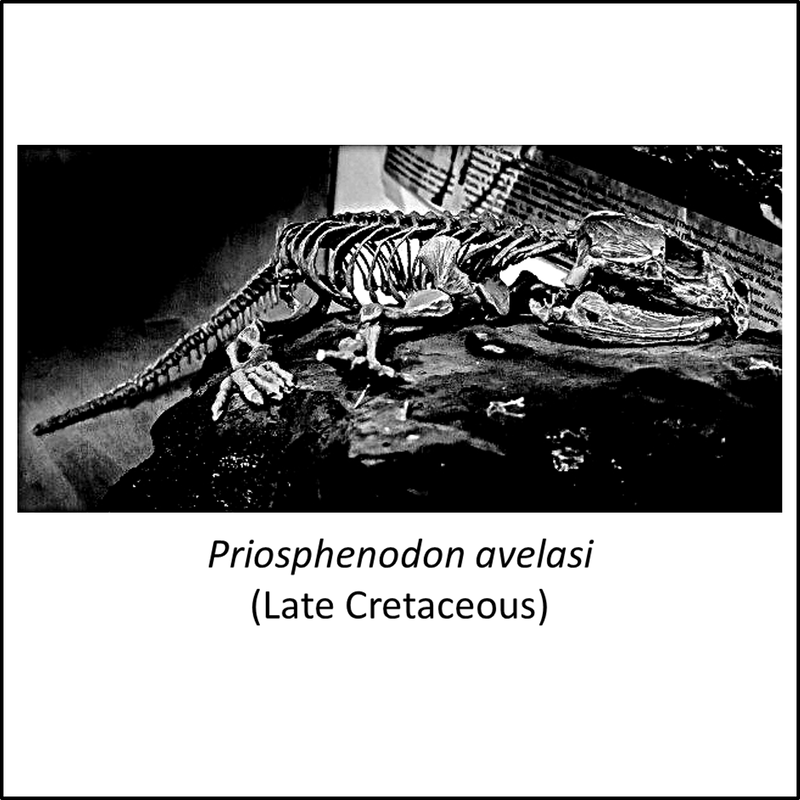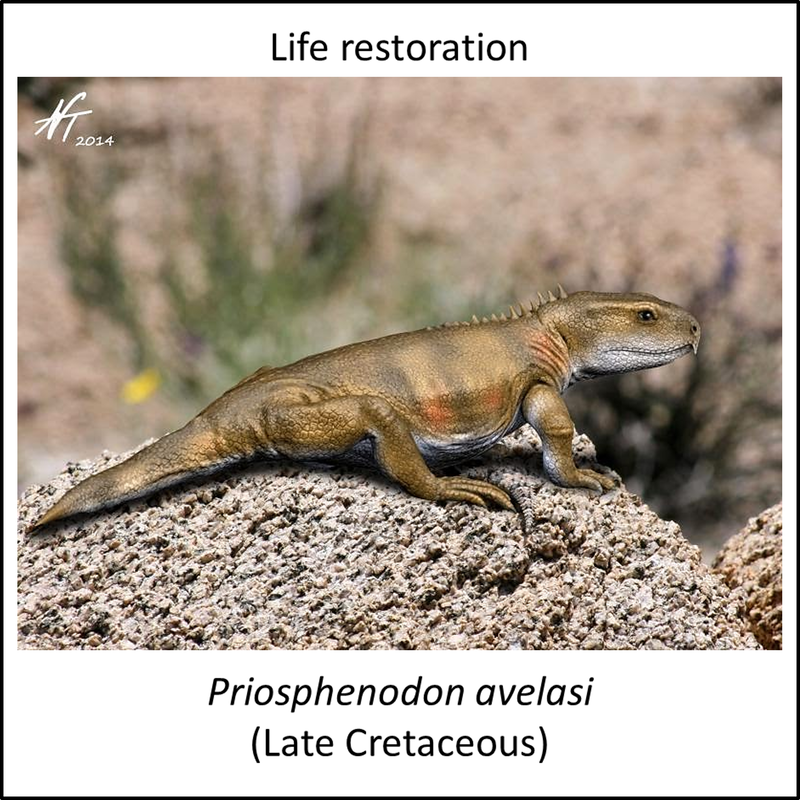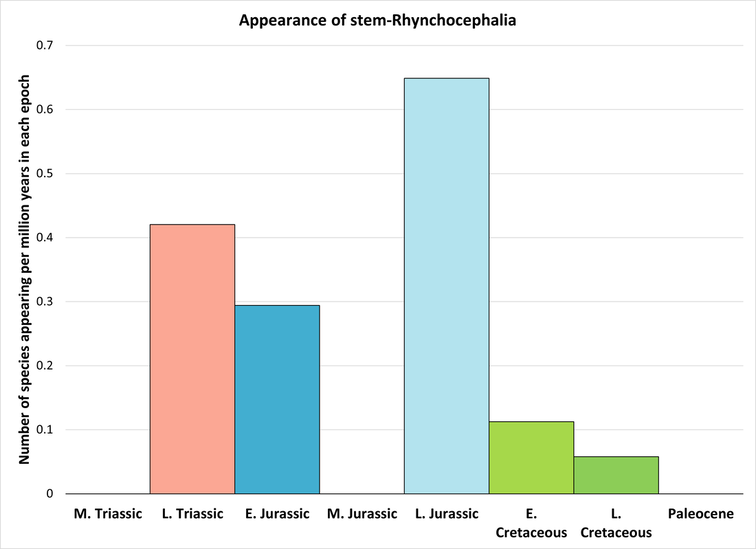The tuatara (Subclass Rhynchocephalia, Class Reptilia) are represented today by only one family, the Sphenodontidae, which contains only one species, represented by the tuatara of New Zealand. However, there are many fossil representatives of the rhynchocephalians. The rhynchocephalians are lizard-like animals, but they differ from the squamates (lizards and snakes) mainly in some aspects of their skull structure and dentition (Evans, 2015).
Note that this website does not include a page on the stem group of the clade to which the Tuatara belong (the Lepidosauria). The reason for this is that there is a lack of consensus in the literature as to which fossils, if any, belong to the lepidosaurian stem group (see discussion in Gauthier and de Queiroz, 2020). Few candidate fossils have been found, and many of these are poorly preserved or of uncertain assignment to particular species, such that their phylogenetic placements have been highly unstable (Martínez et al, 2021). However, the latter authors describe the skull of a newly-discovered species of Late Triassic age, Taytalura alcoberi, that they assign to the stem-Lepidosauria on the basis of what they claim to be a robust phylogeny.
The phylogeny of the stem-Rhynchocephalia is currently undergoing intense investigation, and several phylogenetic trees have been published in the last few years. There are significant differences between many of these trees, but the one represented below, dating from 2021, is similar in essential respects to the one most recently published by Simões et al (2022).
Note that this website does not include a page on the stem group of the clade to which the Tuatara belong (the Lepidosauria). The reason for this is that there is a lack of consensus in the literature as to which fossils, if any, belong to the lepidosaurian stem group (see discussion in Gauthier and de Queiroz, 2020). Few candidate fossils have been found, and many of these are poorly preserved or of uncertain assignment to particular species, such that their phylogenetic placements have been highly unstable (Martínez et al, 2021). However, the latter authors describe the skull of a newly-discovered species of Late Triassic age, Taytalura alcoberi, that they assign to the stem-Lepidosauria on the basis of what they claim to be a robust phylogeny.
The phylogeny of the stem-Rhynchocephalia is currently undergoing intense investigation, and several phylogenetic trees have been published in the last few years. There are significant differences between many of these trees, but the one represented below, dating from 2021, is similar in essential respects to the one most recently published by Simões et al (2022).
Figure 1. Phylogenetic time tree of the stem-Rhynchocephalia (NB: the age of Squamata is based on that of the possible stem-squamate Megachirella wachtleri)
The above tree contains several clades that died out and thus represent evolutionary dead ends (the Clevosauridae, Pleurosauridae and Eilenodontinae). We will start by excluding those clades so that we can consider only the direct stem line that led to the crown group.
Two fossils, both of Late Triassic (Carnian) age, represent the oldest known stem-Rhynchocephalia:
Two fossils, both of Late Triassic (Carnian) age, represent the oldest known stem-Rhynchocephalia:
- Polysphenodon mulleri, described from Middle Keuper sediments at a depth of 775 meters in a borehole at Hoffmannstal near Fallesleben in Germany (Fraser and Benton, 1989; Hsiou et al, 2019).
- Brachyrhinodon taylori, from the Lossiemouth Sandstone Formation at Lossiemouth West Quarry, Scotland (Fraser and Benton, 1989; Apesteguía et al, 2014).
Figure 2. Images of rhynchocephalians in the direct stem line
The fossils shown above are placed in order from the most basal to the most crownward in the phylogenetic tree, and there seems to be a hint of a trend from iguana-like towards more slender forms. Phylogenetic studies have shown that changes in dentition and jaw morphology were significant (Hsiou et al, 2015).
For comparison with the direct stem line, we will now consider the side branches. The most basal of these is the Clevosauridae, which is characterized by several synapomorphies of the skull (Hsiou et al, 2015). The figure below illustrates the fossils of the clade for which public-domain images are available (click on image for larger view):
For comparison with the direct stem line, we will now consider the side branches. The most basal of these is the Clevosauridae, which is characterized by several synapomorphies of the skull (Hsiou et al, 2015). The figure below illustrates the fossils of the clade for which public-domain images are available (click on image for larger view):
Figure 3. Images of stem-rhynchocephalians in the Clevosauridae
The above images are placed in order from most basal to those closest to the termination of the clade, but no trends can be seen with such a small number of fossils.
The next set of images, which includes a duplication of the image for Vadasaurus herzogi, illustrates the Pleurosauridae, which are defined by ten synapomorphies that pertain to the skull (Bever and Norell, 2017) and were the only marine members of the rhynchocephalians (Klein and Scheyer, 2017):
The next set of images, which includes a duplication of the image for Vadasaurus herzogi, illustrates the Pleurosauridae, which are defined by ten synapomorphies that pertain to the skull (Bever and Norell, 2017) and were the only marine members of the rhynchocephalians (Klein and Scheyer, 2017):
Figure 4. Images of stem-rhynchocephalians in the Pleurosauridae
Again, too few images are available for any recognition of trends, but the most basal member of the clade, Vadasaurus herzogi, appears to lack the slender and elongate form of Pleurosaurus and Palaeopleurosaurus.
The final side-branch clade to be considered is the Eilenodontinae, which are characterized by several features of the jaws and teeth (Apesteguía and Novas, 2003) and were herbivorous (Jones et al, 2018):
The final side-branch clade to be considered is the Eilenodontinae, which are characterized by several features of the jaws and teeth (Apesteguía and Novas, 2003) and were herbivorous (Jones et al, 2018):
Figure 5. Images of stem-rhynchocephalians in the Eilenodontinae
The life restorations shown above suggest that the Eilenodontidae were very similar in general appearance to the extant tuatara. However, the latter is carnivorous rather than herbivorous.
Making allowance for the ghost lineage of at least 5 million years on the rhynchocephalian stem line (Figure 1), the stem-Rhynchocephalia must have appeared in the Middle Triassic. All the known fossils of the stem group are of Late Cretaceous age or older, so the stem group developed over a period of at least 148 million years. As indicated in the histogram below, the rate of appearance of new species was highest in the Late Triassic and the Late Jurassic:
Making allowance for the ghost lineage of at least 5 million years on the rhynchocephalian stem line (Figure 1), the stem-Rhynchocephalia must have appeared in the Middle Triassic. All the known fossils of the stem group are of Late Cretaceous age or older, so the stem group developed over a period of at least 148 million years. As indicated in the histogram below, the rate of appearance of new species was highest in the Late Triassic and the Late Jurassic:
Figure 6. Rate of appearance of stem-group rhynchocephalians (including only the genera shown in Figure 1)
The crown group must have appeared at some undetermined time between the Late Cretaceous (Turonian) and the Late Pleistocene, which is the maximum age of fossils assigned to the genus Sphenodon (Worthy and Grant‐Mackie, 2003).
References
Apesteguía, S., & Novas, F. E. (2003). Large Cretaceous sphenodontian from Patagonia provides insight into lepidosaur evolution in Gondwana. Nature, 425(6958), 609-612.
Apesteguía, S., Gómez, R.O., Rougier, G.W. (2014). The youngest South American rhynchocephalian, a survivor of the K/Pg extinction. Proc. R. Soc. B 281: 20140811.
Bever, G. S., & Norell, M. A. (2017). A new rhynchocephalian (Reptilia: Lepidosauria) from the Late Jurassic of Solnhofen (Germany) and the origin of the marine Pleurosauridae. Royal Society Open Science, 4(11), 170570.
Chambi-Trowell, S. A., Martinelli, A. G., Whiteside, D. I., Vivar, P. R. R. D., Soares, M. B., Schultz, C. L., ... & Rayfield, E. J. (2021). The diversity of Triassic South American sphenodontians: a new basal form, clevosaurs, and a revision of rhynchocephalian phylogeny. Journal of Systematic Palaeontology, 19(11), 787-820.
Evans, S. E. (2015). Rhynchocephalia. In Access Science. McGraw-Hill Education. https://doi.org/10.1036/1097-8542.588200.
Fraser, N. C., & Benton, M. J. (1989). The Triassic reptiles Brachyrhinodon and Polysphenodon and the relationships of the sphenodontids. Zoological Journal of the Linnean Society, 96(4), 413-445.
Gauthier, J. A., & de Queiroz, K. (2020). Pan-Lepidosauria. In De Queiroz, K., Cantino, P. D., & Gauthier, J. A. (Eds.). (2020). Phylonyms: A companion to the PhyloCode. CRC Press, 1352 p.
Hsiou, A. S., De França, M. A. G., & Ferigolo, J. (2015). New data on the Clevosaurus (Sphenodontia: Clevosauridae) from the Upper Triassic of southern Brazil. PLoS One, 10(9), e0137523.
Hsiou, A. S., Nydam, R. L., Simões, T. R., Pretto, F. A., Onary, S., Martinelli, A. G., ... & Caldwell, M. W. (2019). A new clevosaurid from the Triassic (Carnian) of Brazil and the rise of sphenodontians in Gondwana. Nature Scientific reports, 9(1), 1-12.
Jones, M. E., O'higgins, P., Fagan, M. J., Evans, S. E., & Curtis, N. (2012). Shearing mechanics and the influence of a flexible symphysis during oral food processing in Sphenodon (Lepidosauria: Rhynchocephalia). The Anatomical Record: Advances in Integrative Anatomy and Evolutionary Biology, 295(7), 1075-1091.
Jones, M. E., Lucas, P. W., Tucker, A. S., Watson, A. P., Sertich, J. J., Foster, J. R., ... & Salvemini, F. (2018). Neutron scanning reveals unexpected complexity in the enamel thickness of an herbivorous Jurassic reptile. Journal of The Royal Society Interface, 15(143), 20180039.
Klein, N., & Scheyer, T. M. (2017). Microanatomy and life history in Palaeopleurosaurus (Rhynchocephalia: Pleurosauridae) from the Early Jurassic of Germany. The Science of Nature, 104(1), 1-8.
Martínez, R. N., Simões, T. R., Sobral, G., & Apesteguía, S. (2021). A Triassic stem lepidosaur illuminates the origin of lizard-like reptiles. Nature, 597(7875), 235-238.
Simões, T. R., Kinney-Broderick, G., & Pierce, S. E. (2022). An exceptionally preserved Sphenodon-like sphenodontian reveals deep time conservation of the tuatara skeleton and ontogeny. Nature Communications Biology, 5(1), 1-19.
Worthy, T. H., & Grant‐Mackie, J. A. (2003). Late‐Pleistocene avifaunas from Cape Wanbrow, Otago, South Island, New Zealand. Journal of the Royal Society of New Zealand, 33(1), 427-485.
Apesteguía, S., Gómez, R.O., Rougier, G.W. (2014). The youngest South American rhynchocephalian, a survivor of the K/Pg extinction. Proc. R. Soc. B 281: 20140811.
Bever, G. S., & Norell, M. A. (2017). A new rhynchocephalian (Reptilia: Lepidosauria) from the Late Jurassic of Solnhofen (Germany) and the origin of the marine Pleurosauridae. Royal Society Open Science, 4(11), 170570.
Chambi-Trowell, S. A., Martinelli, A. G., Whiteside, D. I., Vivar, P. R. R. D., Soares, M. B., Schultz, C. L., ... & Rayfield, E. J. (2021). The diversity of Triassic South American sphenodontians: a new basal form, clevosaurs, and a revision of rhynchocephalian phylogeny. Journal of Systematic Palaeontology, 19(11), 787-820.
Evans, S. E. (2015). Rhynchocephalia. In Access Science. McGraw-Hill Education. https://doi.org/10.1036/1097-8542.588200.
Fraser, N. C., & Benton, M. J. (1989). The Triassic reptiles Brachyrhinodon and Polysphenodon and the relationships of the sphenodontids. Zoological Journal of the Linnean Society, 96(4), 413-445.
Gauthier, J. A., & de Queiroz, K. (2020). Pan-Lepidosauria. In De Queiroz, K., Cantino, P. D., & Gauthier, J. A. (Eds.). (2020). Phylonyms: A companion to the PhyloCode. CRC Press, 1352 p.
Hsiou, A. S., De França, M. A. G., & Ferigolo, J. (2015). New data on the Clevosaurus (Sphenodontia: Clevosauridae) from the Upper Triassic of southern Brazil. PLoS One, 10(9), e0137523.
Hsiou, A. S., Nydam, R. L., Simões, T. R., Pretto, F. A., Onary, S., Martinelli, A. G., ... & Caldwell, M. W. (2019). A new clevosaurid from the Triassic (Carnian) of Brazil and the rise of sphenodontians in Gondwana. Nature Scientific reports, 9(1), 1-12.
Jones, M. E., O'higgins, P., Fagan, M. J., Evans, S. E., & Curtis, N. (2012). Shearing mechanics and the influence of a flexible symphysis during oral food processing in Sphenodon (Lepidosauria: Rhynchocephalia). The Anatomical Record: Advances in Integrative Anatomy and Evolutionary Biology, 295(7), 1075-1091.
Jones, M. E., Lucas, P. W., Tucker, A. S., Watson, A. P., Sertich, J. J., Foster, J. R., ... & Salvemini, F. (2018). Neutron scanning reveals unexpected complexity in the enamel thickness of an herbivorous Jurassic reptile. Journal of The Royal Society Interface, 15(143), 20180039.
Klein, N., & Scheyer, T. M. (2017). Microanatomy and life history in Palaeopleurosaurus (Rhynchocephalia: Pleurosauridae) from the Early Jurassic of Germany. The Science of Nature, 104(1), 1-8.
Martínez, R. N., Simões, T. R., Sobral, G., & Apesteguía, S. (2021). A Triassic stem lepidosaur illuminates the origin of lizard-like reptiles. Nature, 597(7875), 235-238.
Simões, T. R., Kinney-Broderick, G., & Pierce, S. E. (2022). An exceptionally preserved Sphenodon-like sphenodontian reveals deep time conservation of the tuatara skeleton and ontogeny. Nature Communications Biology, 5(1), 1-19.
Worthy, T. H., & Grant‐Mackie, J. A. (2003). Late‐Pleistocene avifaunas from Cape Wanbrow, Otago, South Island, New Zealand. Journal of the Royal Society of New Zealand, 33(1), 427-485.
Image credits – Stem-Rhynchocephalia
- Header (Tuatara (Sphenodon punctatus), photographed at Nga Manu Reserve near Waikanae, New Zealand): Sid Mosdell from New Zealand, CC BY 2.0 <https://creativecommons.org/licenses/by/2.0>, via Wikimedia Commons
- Figure 2 (Diphydontosaurus avonis): Tommy from Arad, CC BY 2.0 <https://creativecommons.org/licenses/by/2.0>, via Wikimedia Commons
- Figure 2 (Planocephalosaurus robinsonae): Virginia Museum of Natural History, licensed under a Creative Commons Attribution-Noncommercial-Share Alike 3.0 United States License.
- Figure 2 (skulls of Microsphenodon bonapartei): Open Access article Chambi-Trowell, S. A., Martinelli, A. G., Whiteside, D. I., Vivar, P. R. R. D., Soares, M. B., Schultz, C. L., ... & Rayfield, E. J. (2021). The diversity of Triassic South American sphenodontians: a new basal form, clevosaurs, and a revision of rhynchocephalian phylogeny. Journal of Systematic Palaeontology, 19(11), 787-820.
- Figure 2 (Microsphenodon bonapartei, life restoration): Open Access article Chambi-Trowell, S. A., Martinelli, A. G., Whiteside, D. I., Vivar, P. R. R. D., Soares, M. B., Schultz, C. L., ... & Rayfield, E. J. (2021). The diversity of Triassic South American sphenodontians: a new basal form, clevosaurs, and a revision of rhynchocephalian phylogeny. Journal of Systematic Palaeontology, 19(11), 787-820.
- Figure 2 (Vadasaurus herzogi): Gabriel S. Bever & Mark A. Norell, CC BY 4.0 <https://creativecommons.org/licenses/by/4.0>, via Wikimedia Commons
- Figure 2 (Opisthias sp.): National Parks Service, Public domain, via Wikimedia Commons
- Figure 2 (Homoeosaurus maximiliani): Ghedoghedo, CC BY-SA 4.0 <https://creativecommons.org/licenses/by-sa/4.0>, via Wikimedia Commons
- Figure 2 (Sphenofontis velserae): Andrea Villa, Roel Montie, Martin Röper, Monika Rothgaenger, Oliver W.M. Rauhut, CC BY 4.0 <https://creativecommons.org/licenses/by/4.0>, via Wikimedia Commons
- Figure 2 (Sapheosaurus thiollierei): Ghedoghedo, CC BY-SA 4.0 <https://creativecommons.org/licenses/by-sa/4.0>, via Wikimedia Commons
- Figure 2 (Kallimodon pulchellus): Ghedoghedo, CC BY-SA 4.0 <https://creativecommons.org/licenses/by-sa/4.0>, via Wikimedia Commons
- Figure 3 (Brachyrhinodon taylori, fossil): The Trustees of the Natural History Museum, London, http://creativecommons.org/licenses/by/4.0/
- Figure 3 (Brachyrhinodon taylori, life restoration): Nobu Tamura under a Creative Commons 3.0 Unported (CC BY-NC-ND 3.0) license
- Figure 3 (skull of Clevosaurus hudsoni): Hemiauchenia, CC BY-SA 4.0 <https://creativecommons.org/licenses/by-sa/4.0>, via Wikimedia Commons
- Figure 3 (skull of Clevosaurus cambrica): Hemiauchenia, CC BY-SA 4.0 <https://creativecommons.org/licenses/by-sa/4.0>, via Wikimedia Commons
- Figure 3 (Clevosaurus cambrica, life restoration): James Robbins, CC BY 4.0 <https://creativecommons.org/licenses/by/4.0>, via Wikimedia Commons
- Figure 3 (skull of Clevosaurus brasiliensis): Annie Schmaltz Hsiou, Marco Aurélio Gallo De França, Jorge Ferigolo, CC BY 2.5 <https://creativecommons.org/licenses/by/2.5>, via Wikimedia Commons
- Figure 4 (Vadasaurus herzogi): Gabriel S. Bever & Mark A. Norell, CC BY 4.0 <https://creativecommons.org/licenses/by/4.0>, via Wikimedia Commons
- Figure 4 (Pleurosaurus goldfussia, fossil): Ghedoghedo, CC BY-SA 3.0 <https://creativecommons.org/licenses/by-sa/3.0>, via Wikimedia Commons
- Figure 4 (Pleurosaurus goldfussia, life restoration): Nobu Tamura under a Creative Commons 3.0 Unported (CC BY-NC-ND 3.0) license
- Figure 4 (Palaeopleurosaurus posidoniae): Ghedoghedo, CC BY-SA 3.0 <https://creativecommons.org/licenses/by-sa/3.0>, via Wikimedia Commons
- Figure 5 (Patagosphenos watuku): Sebastían Rozadilla, licenciado bajo Creative Commons Reconocimiento 2.5 Argentina License
- Figure 5 (Priosphenodon avelasi, fossil): Museo Provincial Carlos Ameghino, CC BY-SA 4.0 <https://creativecommons.org/licenses/by-sa/4.0>, via Wikimedia Commons
- Figure 5 (Priosphenodon avelasi, life restoration): Nobu Tamura, under Creative Commons Attribution- ShareAlike (CC BY-SA) license
